Upper Dolpo Trek: Trekking in Raw Land
If you are looking for a trekking experience in Nepal that is off the beaten path, then the Upper Dolpo Trek is a trek like absolutely no other on Earth! Exploring the far western region of Nepal, this trek takes you into valleys, remote villages, and unspoilt terrain; Dolpo is known for being one of the last true wildernesses left in the world to be trekked into.
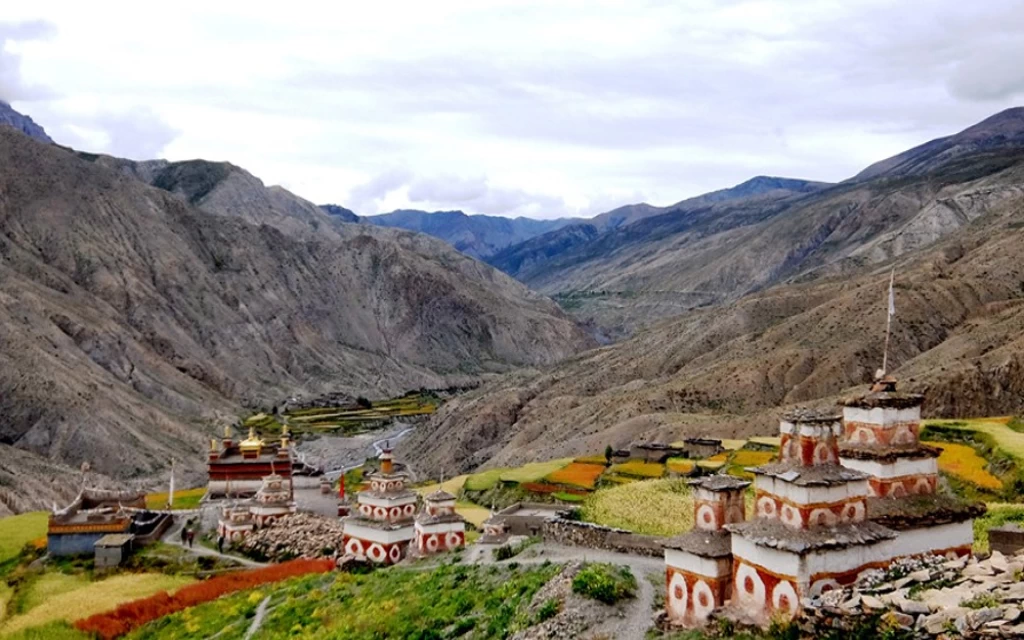
What makes Upper Dolpo Trek Different
Some of the most trafficked and highest number of trekkers in Nepal are the Everest and Annapurna; meanwhile, the Upper Dolpo has a significantly low number of trekkers each year due to its special area permit. This means trails stay sustainable, the landscape remains unadulterated, and your cultural experience is as true as it can be. This leaves trails intact, the landscape unspoiled, and your cultural experience as true as possible.
Highlight of the Upper Dolpo Trek:
1. Shey Phoksundo Lake
Shey Phoksundo Lake is often referred to as the crown jewel of Upper Dolpo. It has beautiful turquoise-blue waters that lie silent at approximately 3,611 m and is surrounded by towering cliffs and snow-topped peaks. The colors in the lake refract and reflect as light changes with different heights of the sun to create a unique visual experience for each explorer drawn to its timing. It is unique among nearly all glacial lakes in that it contains no fish; for those of you with apprehensions about some danger on the lake, without any aquatic life, as well as the stillness of the lake, should definitely create a sense of transparency, as well as a heightened experience of presence. Shey Phoksundo is also a natural wonder, as it has important cultural and spiritual attachments.

Shey Phoksundo Lake is sacred to Bonpos and Tibetan Buddhists. Not only do Herby legends operate here, but ancient myths are also caught and subsequently translated somehow, often with the help of priests for your reading comfort, which aids the mystique associated with the reserve. With Ringmo, the local village near Phoksundo, the opportunity to directly encounter relatively untouched locals establishes the opportunity to connect with local people who have for centuries kept their traditions, values, and manner of living intact despite the relentless advance of modernity.
2. Shey Gompa Monastery
It is the “spiritual heart of Upper Dolpo,” situated under Crystal Mountain, which is a chief pilgrim site for Buddhists and Bon practitioners both. Accommodation is found only in very simple teahouses or campsites with the minimum amenities. That does mean tourists to Upper Dolpo will be able to leave the region untouched, but they will need to be self-sufficient and capable of handling minimal living. The monastery is roughly 800 years old and and a role as one of the last bastions of the ancient religion (Bon) and a trove of spiritual history. Pilgrims travel long distances to participate in the kora (a pilgrimage ritual) that circumambulates the Crystal Mountain, spiritually purifying the pilgrimage way by receiving blessings along the way.
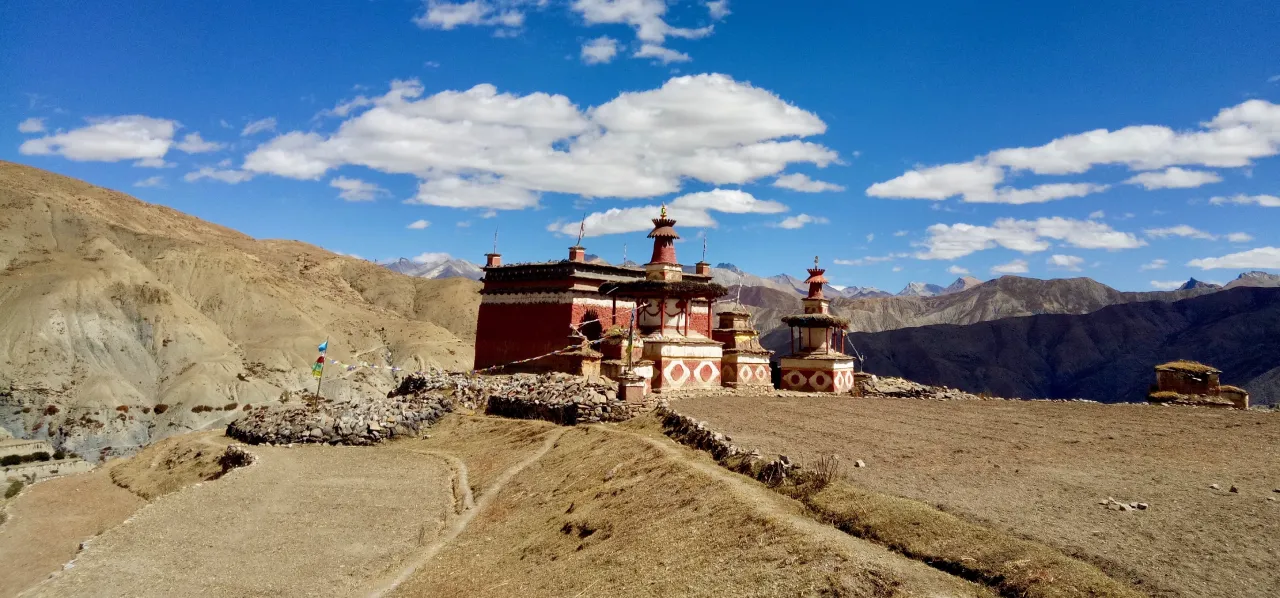
The entirety of the trip to Shey Gompa is a pilgrimage in itself. The powerful nature vibrates a worthy sense of aloneness and isolation, different from another experience based on significant absence, cloaked in teetering valleys and cliffs. Within the very ghosts of the lightless interior within the monastery, images, relics, and elder scriptures (the past remains their present), remind the people of their bond to their assumed beliefs. Thus, trekkers have come to describe their visits to Shey Gompa as spiritual, for not only can one view a slice of an otherwise quietly functioning local religion, but one at the same time finds the more rarely sought typology of space for inner reflection, in the heart of the Himalayas.
3. High Passes and Remote Trails
Trekking Upper Dolpo is obviously an expedition, requiring several high passes including Kang La (5,360m) and Saldang La (5,200m); in one word, the views from those passes don’t disappoint (and the expanse is awe inspiring) because you are in a position to view the rugged mountains meet the great valleys from above.
The high passes necessitate a good level of fitness and recovery, which is rewarding for trekkers with options for experiences that juxtapose pristine wilderness with snow-capped peaks and isolated alpine countries, together, as most people, by example, do not go there. The seldom-travelled routes to the high passes take trekkers through featureless barren hills, hidden valleys, and ancient footpaths used for trade by Tibetans. This brings a feeling of absolute remoteness; it is conceivable you might go days without seeing another trekker.
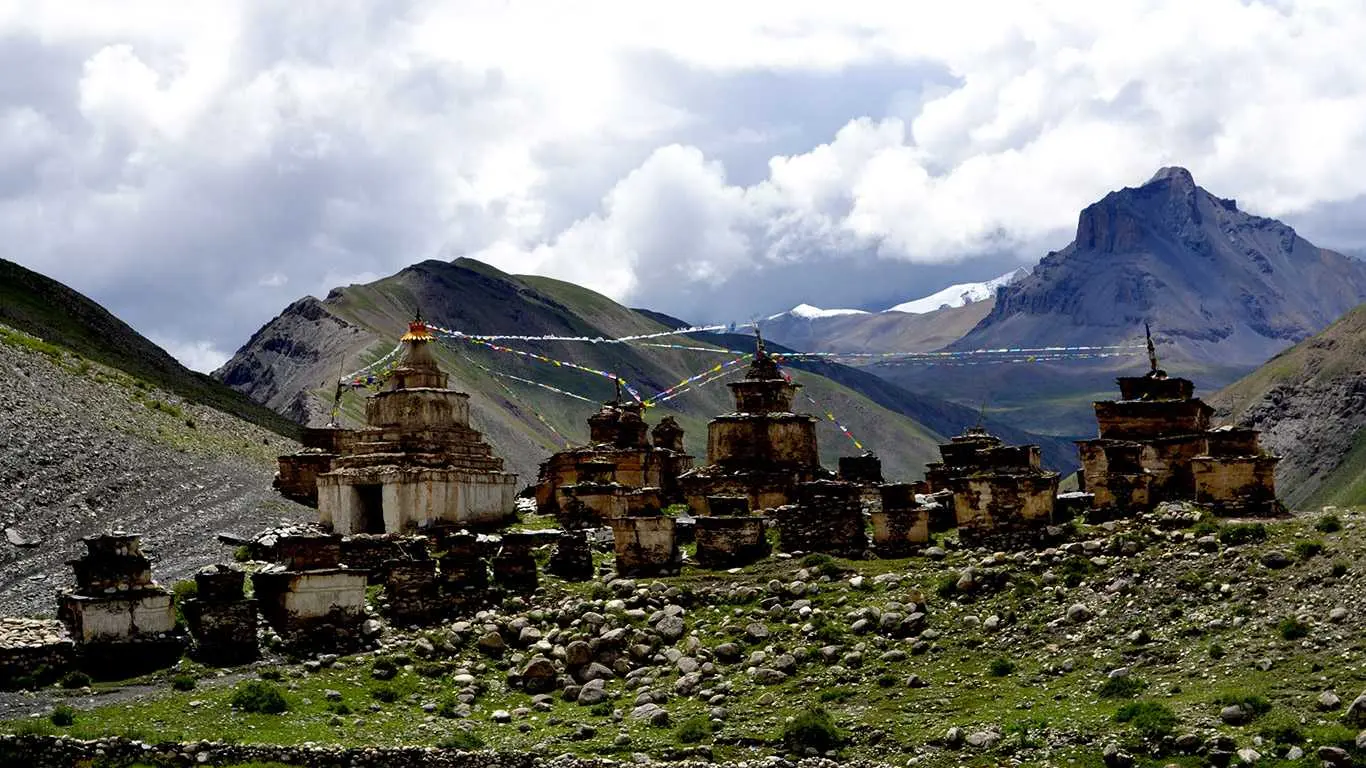
4. Wildlife Encounters
Upper Dolpo is an oasis for rare and endangered wildlife, yet, in these more remote locations, diversions of distractible trekkers are the exception rather than the rule. Observe the opportunities to test your keen sight (and take note of whatever you can record) during your adventures. Here, in the realm of the phantom cat of the mountains, snow leopards, blue sheep recline blankly on sheer cliffs that are almost indistinguishable from stone, while dominion in the skies, the Himalayan griffon soars lazily above, and musk deer skulk.
As long as you can spot those few fragile plus-5,000M ecosystems and find refuge through the ephemeral permanence of heterogeneous distance and absent devout human interaction, you will enjoy the comfort of seeing these extraordinary organisms. It is a rarity to be in a remote valley or high ridge (and have the pleasure of seeing organisms), as the experience changes immeasurably. It is restorative in many ways to find yourself in that emptiness, shed the drone of tiring distractions, and watch wildlife in their natural spaces.
5. Authentic Tibetan Culture
Upper Dolpo offers an amazing opportunity to experience an unspoiled living Tibetan Culture, in totality. Dolpo’s culture is Tibetan. The people of Dolpo, their tongue, their culture, and their religions all exist unchanged as they did centuries ago. The stone-built civilizations characterized by flat-roofed houses, which simultaneously function as animal housing, bulging with grain, carrying warning prayer flags, filled with imposing monasteries, are Tibetan and will be Tibetan.
The Dolpo people engage in an economy driven by religion, agriculture, and trade. The people of Dolpo still lead a traditional Transhumance herding existence on a seasonal basis, utilizing their yaks and sheep. The people of Dolpo continue to perform and observe festivals such as Chaam (masked sacred dances) whose origins in ancient rituals have lasted the test of generations and centuries. Therefore for a trekker’s encounter with the hospitable Dolpo people may not only yield information about Tibetan culture, but also human contact, memories and experiences that will last a lifetime.
Challenges of the Upper Dolpo Trek:
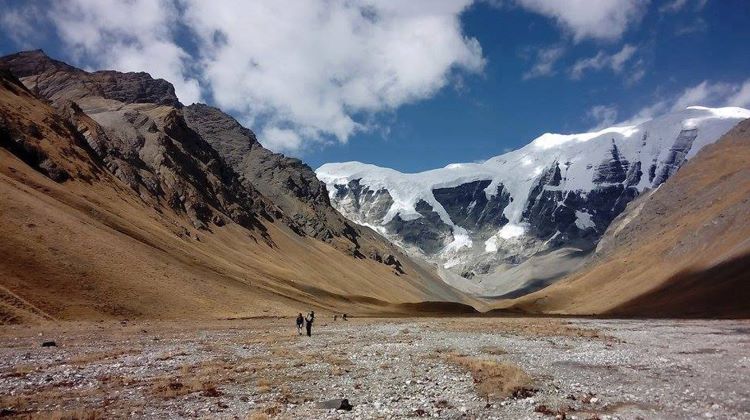
1. Remote Location of Upper Dolpo
Upper Dolpo’s remoteness means it has not developed the infrastructure of other trekking routes. Accommodation is limited to very basic teahouses or campsites, with the simplest comforts available. This does mean that visitors to Upper Dolpo are able to preserve the pristine nature of the region but will need to be self-reliant and ready for basic living.
2. Long and Difficult Trekking Days
Trekkers can expect long days of demanding trekking that will feature walking on very rough terrain. There are various high mountain passes above 5,000 m in the trek, all of which will be demanding endurance and stamina. Lastly, the long trekking day will be demanding a great deal from your mind and body. But the adventurers will be well rewarded for their effort with stunning Himalayan vistas and full immersion in nature. On the other hand, adventurers will be compensated for their hard work with stunning views of the Himalayas and full immersion in nature.
3. The Dangers of Altitude Sickness
Since the altitudes are such high, trekkers must watch out for altitude sickness which may include such symptoms as headaches, nausea, and dizziness. Since physical fitness, as well as an awareness of altitude sickness symptoms, can significantly improve one’s enjoyment and safety since proper acclimatization as well as slow climbing is necessary so that altitude sickness does not develop into more serious health issues, it is possible to prepare oneself significantly for such environments.
4. Limited Medical Access in Upper Dolpo
In most areas of Dolpo there isn’t any access to medical aid and even if there is, there could be weather or terrain factors that make an emergency rescue impossible. Trekkers ought to carry a comprehensive first-aid kit as well as High high-altitude emergency Evacuation insurance.
5. Weather Possibilities
The weather in Upper Dolpo can also be very unpredictable and can change quickly into less than optimal trekker conditions. The winds can blow, the rains can pour suddenly, or snowfall can make the trails challenging or impassable. Trekkers would have to pre-plan well for cold nights, even rain and wet conditions, and for potential storms. Good clothing and flexibility in terms of the intended travel will help alleviate concerns associated with bad weather.
Infrastructure Limitation in Upper Dolpo
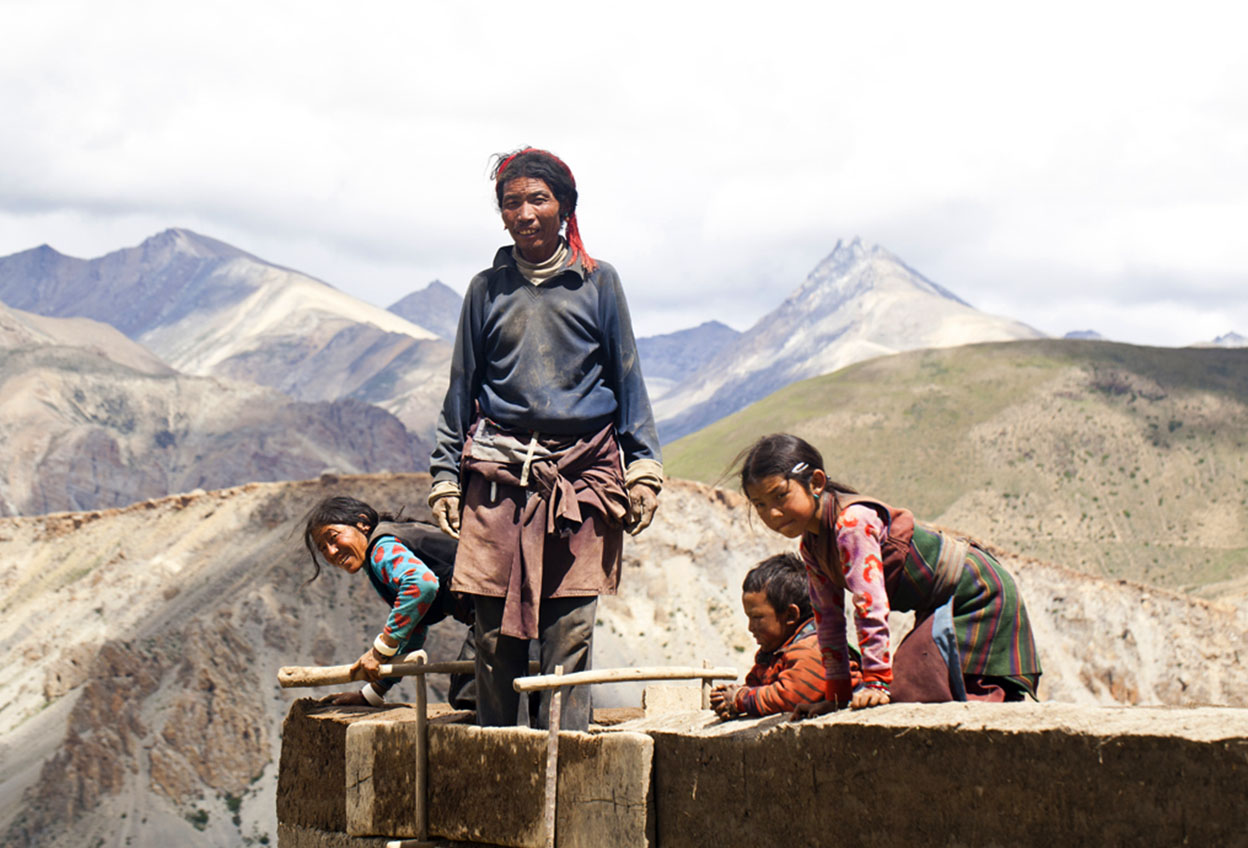
Upper Dolpo and its surrounding areas are very remote, and this remoteness makes it incredibly difficult to get food, fuel, supplies, etc. into these areas – especially for trekkers! Porters and pack animals, which are used by trekkers, are incredibly important as the suppliers weigh heavily and the amount of supplies usually results in a significant dollar cost. A trek in Dolpo is a serious planning and organizing proposal, and in order to successfully navigate the logistics, trekkers should work with an established and experienced agency.
The remote wilderness of Upper Dolpo remains an exceptional destination for people who are willing to overcome its difficulties. The natural splendor of the trek together with its cultural wealth and spiritual importance transforms all obstacles into worthwhile experiences. The Upper Dolpo Trek delivers a deep emotional change and personal accomplishment to physically fit and mentally ready trekkers.
Best Time to Trek Upper Dolpo
The most suitable time to trek Upper Dolpo is in spring from April to June and fall from September to November. Spring hues the landscape with flowers and greenery blooming while autumn provides clear blue skies with fresh air and stable weather. The finest sight of Upper Dolpo’s Himalayan landscapes and turquoise lakes and high plateaus is during these times. The summer monsoon rains create dangerous conditions because of heavy rainfall and landslides while the winter season brings severe cold weather which blocks the high passes. Choosing to trek during spring or autumn seasons provides both safety and better enjoyment for your adventure.
Budget and Cost Breakdown of Upper Dolpo Trek
Upper Dolpo Trek exists as an isolated journey that requires more funds compared to Annapurna or Mardi Himal because of its limited access and complex logistics. Here’s a complete breakdown:
1. Permits
Upper Dolpo requires special permits because it remains a restricted area for trekking. The Restricted Area Permit (RAP) requires a USD 500 payment per person for ten days of trekking in the Upper Dolpo. The Restricted Area Permit (RAP) charges USD 50 for each additional day beyond the initial 10 days of trekking. To obtain the Shey Phoksundo National Park Permit you must pay USD 25 and the TIMS Card costs USD 20. You can obtain all permits through registered trekking agencies or through the Nepal Tourism Board located in Kathmandu. The total cost for permits will reach between USD 600 and 900 because of the duration of your trek.
2. Accommodation in Upper Dolpo
The remoteness of Upper Dolpo creates a lodging situation which consists of basic teahouses combined with camping options. The teahouses or homestays in Ringmo and Saldang charge between USD 5 and 10 per night. In many places, especially beyond Shey Phoksundo, camping becomes necessary. The agency will provide you with tents and kitchen staff together. Along with gear which raises your overall costs if you select camping. The total cost for three weeks of teahouse accommodation will reach USD 200–300. Camping will increase your expenses because you need to pay for staff and equipment rental.
3. Food and Drinks
The price of food rises as elevation and distance from civilization increase. The typical meals consist of dal bhat alongside noodles and soups with Tibetan bread also being served. You can expect to pay between USD 4 and 6 for breakfast followed by USD 6 to 8 for lunch and USD 7 to 10 for dinner. Hot drinks such as tea or coffee cost USD 1–3 per cup. The full-board meals provided by your trekking agency during camping sections will cause your daily food expenses to be between USD 20 and 30. The food and drink costs of your 20-day trek will reach approximately USD 400–600.
4. Guide and Porter
The remote terrain of Upper Dolpo requires trekkers to hire both a guide and a porter. In orderto help them cope with the trek. The day rate of a government-licensed guide is USD 30 to 40. Daily porter fees range between USD 20 and 25 since they transport 20 kilograms of weight. A guide and porter service for 20 days would cost between USD 1,000 and 1,300. Group travelers have the option to distribute their expenses among members.
5. Transportation
Domestic flights start the trek by flying from Kathmandu to Nepalgunj (USD 150–170 one way) before continuing from Nepalgunj to Juphal (USD 130–150 one way). The round-trip ticket price for flights will reach approximately USD 600–650 per individual. Plan extra overnight stays in your budget because weather-related delays happen frequently.
6. Miscellaneous
Expenses in Upper Dolpo. Additional expenses in Upper Dolpo include device charging, which costs USD. 1–3 and limited internet access that charges USD 3–5 per session and snacks and bottled water, and occasional souvenirs. Small expenses will add up so plan to spend between USD 50 and 100. When giving tips to guides and porters, it is standard to provide between USD 100 and 200 total based on service quality and group size. Also, consider travel insurance covering high altitude (USD 150–250).
Total Estimated Cost of Upper Dolpo
The total expenses for the Upper Dolpo Trek depend on whether you select a complete service or partial self-guided approach. A full-service agency will cost you between USD 3,500–5,500 per person. It includes all permits, guide, porter services, transportation, accommodation. food and miscellaneous expenses. The restricted trek of Upper Dolpo provides one of the most exclusive experiences in Nepal through its spiritual monasteries and pristine nature and unique culture and high-altitude remote setting.
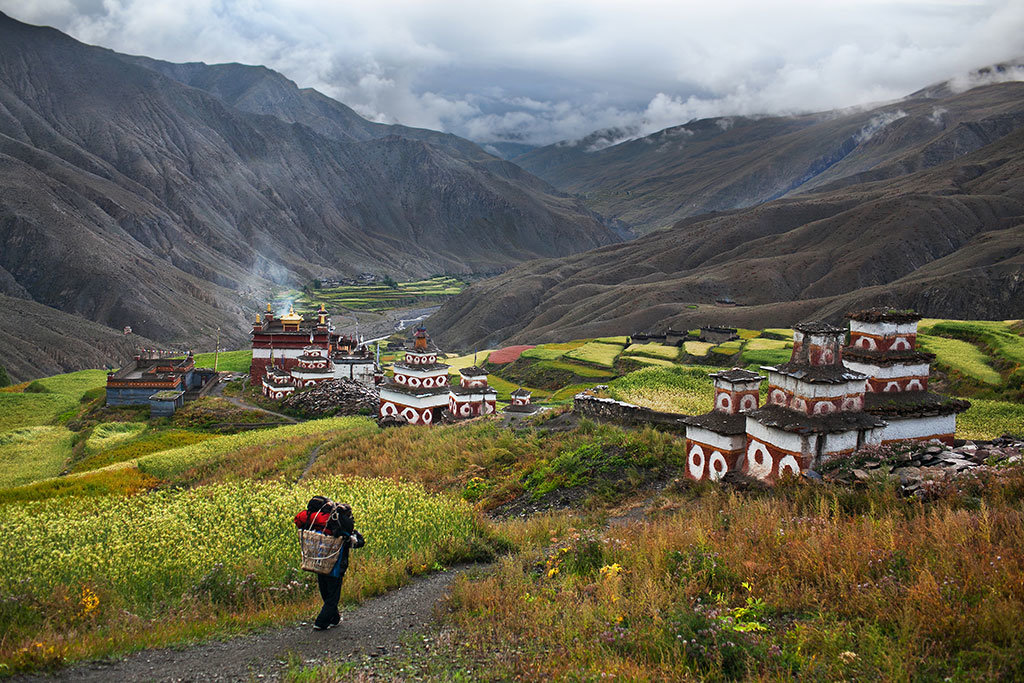
What to Keep in Mind for the Upper Dolpo Trek
- Make sure to bring necessary layers against extreme altitude variations because thermal base layers, together with warm jackets and rain protection, are essential.
- Bring along water purification tablets or an effective water filter because bottled water remains scarce during the trek. The ascent through Kang La and Saldang La passes requires patient acclimatization because of their demanding nature.
- Always ask for permission before taking photos of people or monasteries while showing proper respect towards their religious practices.
- A guide should be hired as a necessity because of the distant location and challenging terrain, and limited trail signage.
Who Would Enjoy an Upper Dolpo Trek?
- Experienced trekkers looking to go way off the grid into a remote corner of the Himalayas Cultural trekkers wanting to experience the ancient Tibetan Bon culture with centuries.
- Old monasteries Wildlife lovers who want to see rare animals like snow leopards or blue sheep. Adventurers who want nothing but the wild, while avoiding crowded trekking routes
- Enjoying pristine landscapes
- Trekkers who are in great physical shape, and are ready for long high-altitude days of trekking.
Conclusion
The Upper Dolpo Trek offers something that most treks in Nepal. Do not pristine wilderness, ancient spiritual culture, timeless villages, and a total escape from the modern world we live in. Yes, it will cost you more, take more time, and require more physical fitness than most treks. You will get an experience like no other. If you have images of wandering through untouched valleys, crossing lofty high passes, and witnessing ancient cultures. Upper Dolpo is a journey of a lifetime. Contact us today at Happy Mountain Nepal, on Facebook, Instagram, or TikTok .
